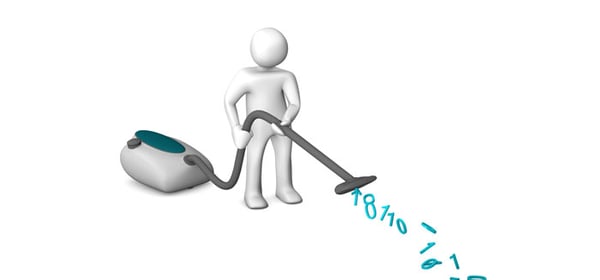An article by Sanjay Sharma, the CEO of Roambee which was named the “IoT Sensor Company of the Year” by Compass Intelligence.
IoT sensors and data analytics are the talk of the moment, but what does it really take to build a winning IoT sensor solution? Here is my experience with Roambee.
If you visit Alibaba.com, you will find more than a thousand IoT sensor devices for sale. Run a Google search for ‘IoT data analytics companies’ and you will find many platforms that are capable of doing big data analytics.
So, what then distinguishes Roambee from everyone else?
Roambee is definitely doing something right in the IoT data game, and it is not magic.
Roambee was named “IoT Sensor Company of the Year” in the 6th Annual Compass Intelligence Awards. Global giants like T-Mobile, Verizon, Intel, Cisco, Samsung and Apple were award recipients in other categories.
While this recognition is humbling, I thought it would be worth sharing how we approached the IoT data game.
Sensing Data

Good data analytics requires good data.
So, it all starts with sensing data efficiently. Counter-intuitively though, most skip this initial step and start building out data analytics platforms as the first step.
In 2013, when the world was trying to solve the logistics problem by tracking “fleet,” we took a bold step in the direction of monitoring “things.” Things can be containers, pallet loads, individual packages — basically the consignment itself, and not the fleet that’s carrying it.
This endeavor didn’t come without challenges. We needed a wireless device with a solid battery backup in the place of the traditional wired GPS vehicle tracking devices that dominated the market at that time.
Market devices couldn’t do this job well. They were not easily configurable remotely, (e.g., when you needed an “always on” mode while still pushing your battery life for many days). The devices lacked the ability to get an accurate location through GPS in environments where signal strength was low — we needed an active mode for the GPS antennas to get accurate location when indoors or when the device is inside a container. Nor could the devices provide our customers with the ability to use the sensor deck of their choice for a specific application (e.g., tamper).
Therefore, we built our own device portfolio, and recently achieved granular monitoring of goods across the supply chain at a package-level using our BeeBeacon solution.
Wireless devices that ride with the consignment brought the need for a strong reverse logistics network to support our customers in retrieving the devices after use. We solved this problem by building out a reverse logistics network with our team and partners.
By having consignment-level data, we now had a very different type of “big data” mine as compared to other companies in the space which were tracking trucks and fleet. We had the ability to not only tell if a consignment is in the right location, but also how well it is doing.
Condition monitoring using sensors enabled us to tell a more informed story about our customers’ supply chains or assets.
Making Sense of Data

Collecting good data for our customers was just one part of the solution.
When customers were tracking 50 shipments in a month, they were excited to see their phones rings every time their vehicles had stopped enroute. Once they scaled to 5,000 shipments though, it turned into a nightmare and these alerts became noise.
Our challenge was to provide our customers with intelligence on the 5 critical shipments out of the 5,000 shipments that need their attention.
Predicting these 5 critical shipments accurately involved a holistic data analytics approach ranging from cleansing data, organizing data into patterns, integrating external data streams to tell the full story (e.g., flight data, ship data, weather data).
This exercise of organizing data to “make sense” gave birth to our Honeycomb API platform, which has evolved today to predict ETA and other parameters, even across multi-modal global shipments with a very high level of confidence.
Better data is the basis for better decisions. But, how can you equip yourself with get better data? Read this whitepaper to find out.
Acting on It!

The game doesn’t end with making sense of data though.
Once you have insights on what could possibly going wrong with your supply chain, you need to act in time to prevent your operations from getting disrupted.
Many of our customers were busy focusing on the big picture (and rightly so), therefore timely intervention was not always possible.
At Roambee, we realized the importance of enabling our customers to act in time and built “BeeCentral.”
BeeCentral is a global, data-driven command center, where a team of trained frontline experts use Roambee insights to take prompt remote action on behalf of our customers.
This ensures that enterprises can stay “always on,” and run efficiently without hiring a response team in-house.
The Future with Data
The future for us is all about building on these pillars: sensing, making sense, and acting on data. For instance, we are exploring Narrowband to improve data collection. We are working with Blockchain to further improve the confidence in our data analytics through transparency.
There is no doubt that we continue to face challenges at every step of the journey in building this IoT data ecosystem, but by taking a holistic end-to-end approach towards IoT sensor data, Roambee is putting a trusted dot on the map for hundreds of companies around the world.
Learn what Roambee is all about!
The IoT Game for Users
Is the data game limited to an IoT solutions company like Roambee? No!
The same holistic approach towards data applies to enterprises that use (or are looking at using) IoT too. You need the right data, the right analytics, and most importantly, be geared up to act in time as part of your digitization initiative.
Enterprises, big or small, that adopt an end-to-end approach with their monitoring data will become more and more competitive, and be the top enterprises of the future.
The enterprises looking at a quick fix with IoT (going for off-the-shelf devices with purely a cost focus or with solutions that do not address the data game holistically) will not only be left wondering why their digitization initiatives failed to provide ROI a few years down the line, but will also risk putting their very existences at stake.











